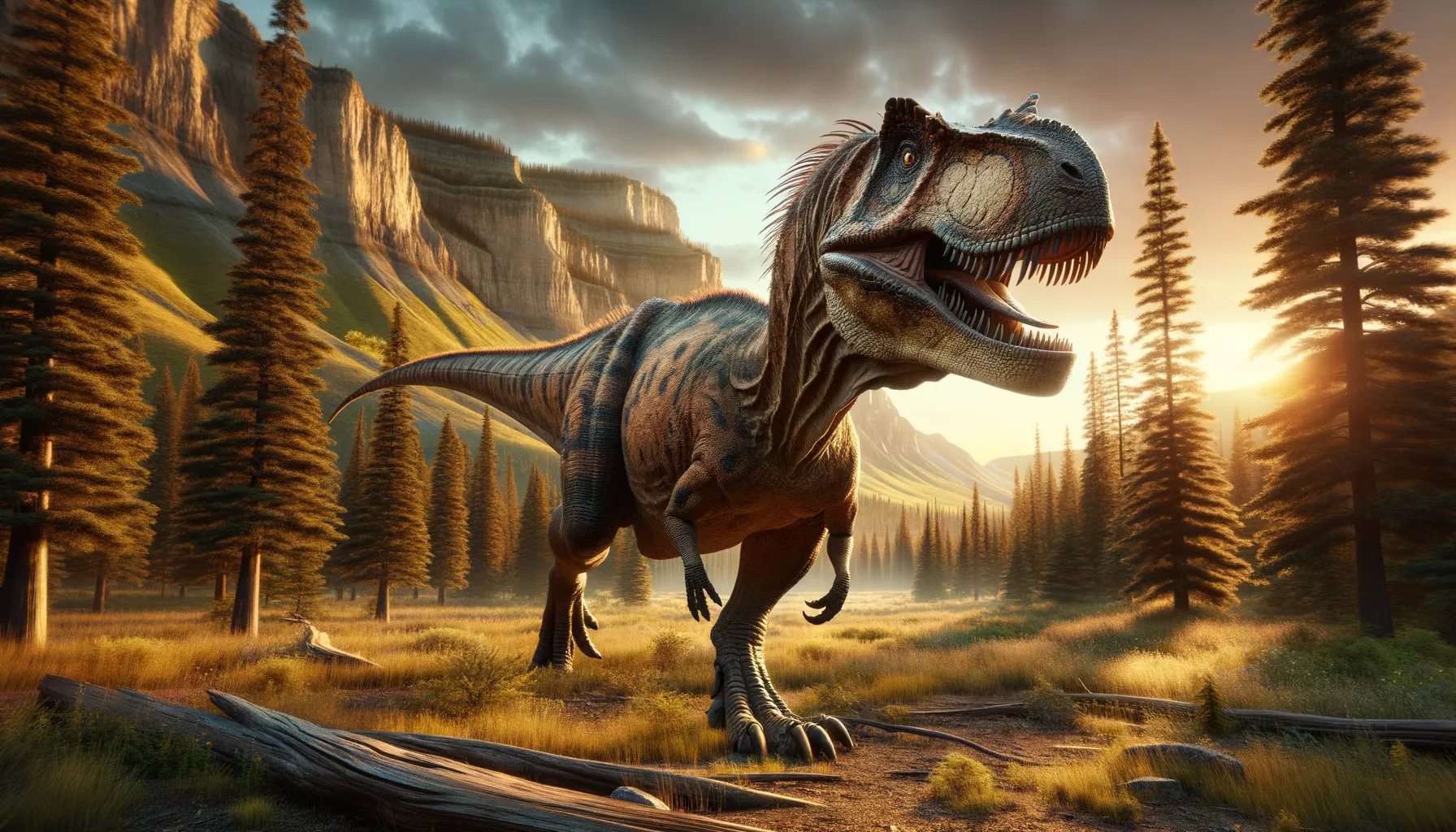
Cryptodraco
An agile predator of prehistoric times.
Period
Cretaceous
Length
Measures around 10 meters from head to tail.
Height
About 4 meters when standing upright.
Weight
Approximately 1,500 kilograms.
Cryptodraco was a formidable predator of the Late Cretaceous period. This dinosaur roamed ancient landscapes in search of prey, using its moderate speed and powerful build to its advantage. Its discovery in Montana provided crucial insights into the diversity of predatory dinosaurs. Cryptodraco's unique combination of size and agility made it an exceptional hunter, showcasing the evolutionary prowess of theropods during a time of significant environmental changes.
Diet
Cryptodraco primarily fed on medium-sized herbivorous dinosaurs. It was also known to scavenge when food was scarce. This mix of hunting and scavenging helped it survive in dynamic ecosystems.
Hunting
Cryptodraco hunted in open areas, relying on its speed and surprise to catch prey. It used its sharp teeth and powerful jaws to deliver fatal bites. Hunting alone, it preferred the element of surprise over brute force.
Environmental challenges
Cryptodraco faced challenges from changing climates during its existence. Fluctuations in temperature and vegetation affected food availability. It had to adapt its hunting strategies to the migrating herds. Competition with other predatory dinosaurs also posed significant pressures.
Speed
Moderate, allowing quick bursts for hunting.
Lifespan
Estimated to be around 20-30 years.
First discovery
Unearthed in the arid Badlands of Montana in 1995.
Fun Facts
- Cryptodraco is a lesser-known dinosaur whose name means 'hidden dragon', as its fossils were hidden away for millions of years.
- This dinosaur lived during the late Cretaceous period, around 70 million years ago.
- Cryptodraco was a herbivore, meaning it likely spent much of its day foraging for plants to eat.
- The dinosaur had a unique crest on its head, which may have been used for attracting mates or displaying dominance.
- Cryptodraco's bones were first discovered in what is now modern-day Mongolia, a region rich with dinosaur fossils.
- Despite its name, Cryptodraco was not a flying dinosaur but rather walked on two legs.
- Advanced scanning technology has helped paleontologists learn more about Cryptodraco's structure and lifestyle.
Growth and Development
Cryptodraco grew rapidly during its first few years, reaching near-adult size quickly to enhance survival. It developed strong muscular and skeletal structures suited for a predatory lifestyle. Over its lifespan, wear on its teeth indicates adaptations to different prey types. Growth rings in fossilized bones help estimate age and maturity.
Habitat
Cryptodraco inhabited regions with open plains and intermittent forests. These areas provided ample opportunities for ambush and pursuit of prey. Water sources were crucial for survival, influencing their territorial range. Seasonal migrations of herbivores shaped the territorial dynamics of its habitat.
Interaction with other species
Cryptodraco encountered various herbivorous dinosaurs during hunts. It had minimal conflict with apex predators, avoiding direct confrontations. Evidence suggests occasional interactions with smaller, opportunistic carnivores. These interactions often determined feeding hierarchies within its territory.
Natural lifespan
It likely had a natural lifespan of two to three decades.
Reproduction
Cryptodraco is believed to have laid eggs in carefully constructed nests. Parental care likely extended to guarding eggs from predators. Hatchlings grew rapidly, needing to reach a sufficient size to deter threats. Social bonding among young may have included group interactions for safety.
Social behaviour
Cryptodraco exhibited solitary hunting behavior to minimize competition. Social interactions were primarily during mating seasons when individuals congregated. Displays of dominance and courtship were integral to their social interactions. Juveniles sometimes formed temporary groups for protection and learning.
Fossil locations
Significant fossil remains were discovered in Montana's rugged terrains. Additional specimens have been found in similar Cretaceous deposits across North America. These finds helped establish a clear understanding of its geographic range. Ongoing excavations continue to uncover more about its distribution and ecology.
